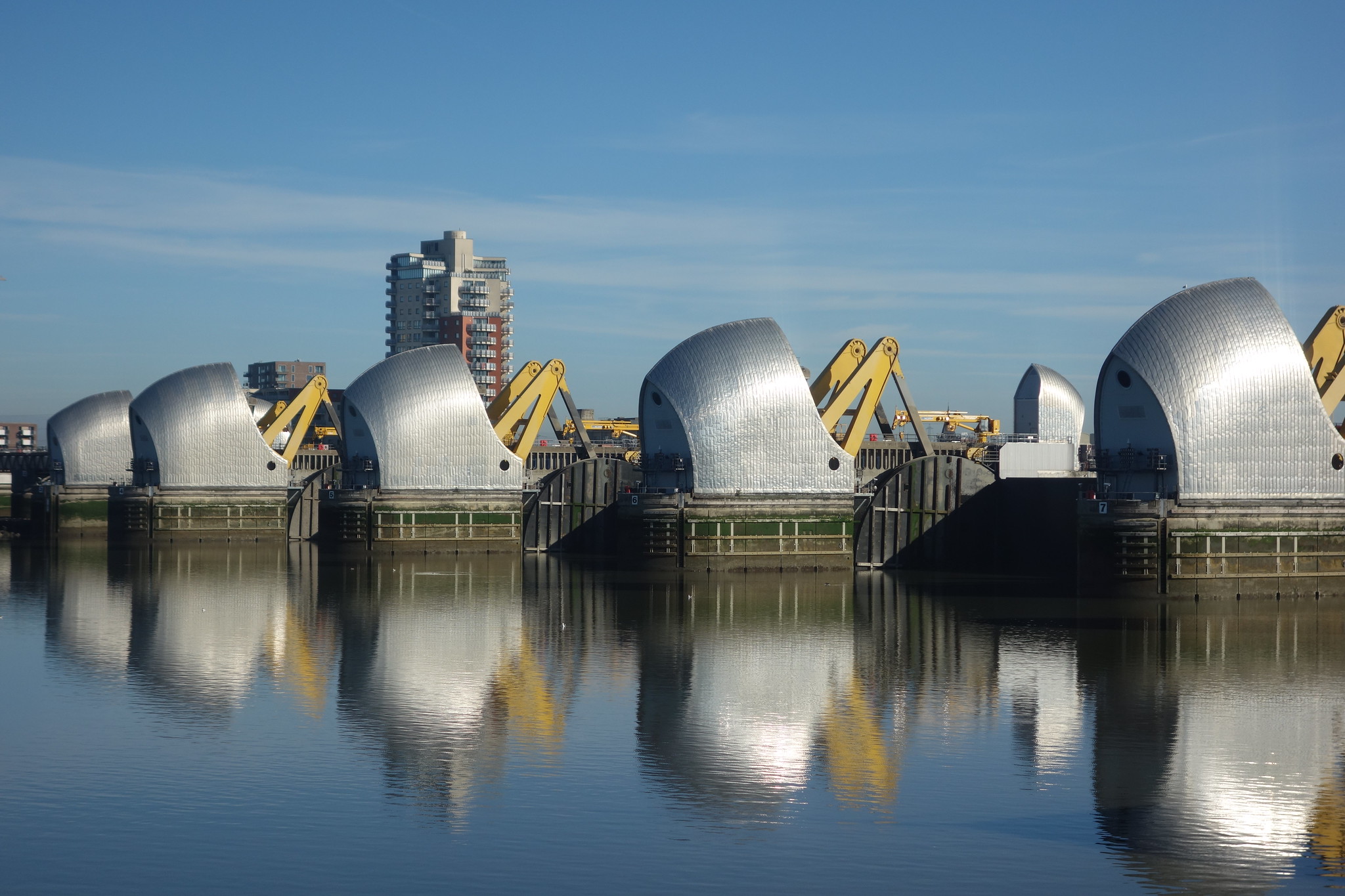Excerpt:
At a conference organised by the new Venice Sustainability Foundation in June, major public figures agreed for the first time that sea-level rise is the main problem facing the city now.
The last time the Thames broke its banks and flooded central London was on 7 January 1928, when a storm sent record water levels up the tidal river, from Greenwich and Woolwich in the east as far as Hammersmith in the west. Built on flood plains, the capital was defended only by embankments. The flood waters burst over them into Whitehall and Westminster, and rushed through crowded slums. Fourteen died and thousands were left homeless.
After another catastrophic North Sea storm surge in 1953 caused floods along the east coast of England that were even more deadly – killing 307 people, including 59 at Canvey Island on the Thames estuary – discussion began about how to protect London.
Three decades later, the Thames Barrier was completed. A colossal engineering project, it spans 520 metres (1,700ft) of river near Woolwich and has so far protected 1.4 million Londoners (and about £320bn worth of properties) from more than 100 tidal floods.
The ocean, however, is rising. With sea levels forecast to creep up by as much as a metre by 2100, and more extreme weather expected in a warming world, the Environment Agency (EA) says tidal defences upstream of the barrier must be raised by 2050 – 15 years earlier than expected. It cited “heightened risk of flooding” from rising sea levels.
Recently, the agency updated its plan to support the Thames Barrier and the wider tidal defence system, which incorporates eight other flood barriers, 200 miles of walls and embankments, and 400 other structures such as flood gates, outfalls and pumps. It expects the barrier to continue to protect London until 2070 – but that to protect the capital up to 2100, as planned, the structure may need to be replaced.
That decision – whether to build a new barrier or upgrade the existing one – will wait until 2040, with all options remaining open until then, it says.
Critics are concerned this timescale is too slow. In 2013-14, the barrier was closed a record-breaking 50 times. “We’re absolutely not ready,” says Prof Hannah Cloke, an environmental modeller and forecaster at the University of Reading. “Evidence shows sea levels rising faster than we thought and that storms like 2013-14 are more likely … We should be preparing for that and we’re not. The barrier was never designed to be closed 50 times a year…”
SHARE THIS ARTICLE
Environment Agency TV (04-14-2014):
How the Thames Barrier protects London from flooding.
Tom Edwards, BBC London (11-09-2021):
How long can the Thames Barrier protect London?









